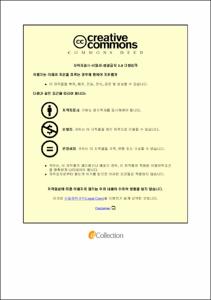Effects of Feeding Frequency on Growth, Body Composition and Size Variation of Black Seabream, Acanthopagrus schlegelii
- Alternative Title
- 사료공급 횟수가 감성돔의 성장, 체성분 및 크기에 미치는 영향
- Abstract
- To evaluate the effects of different feeding frequencies on growth performance, size variability and body composition of juvenile black seabream, Acanthopagrus schlegelii, a 35-day experiment was carried out in a semi-closed recirculating system. The experiment set up consists of three treatments in triplicates of nine rectangular tanks (50 cm L x 37 cm W x 24 cm H), a sump, oxygen circulators, a water pump for each treatment. Water temperature was controlled using an electric heater with temperature controller installed for the whole system. Feeding frequencies were set at one, two and three times/day (T1, T2, and T3) respectively. Experimental fish individual weight of 6.3±0.40 g and total length of 5.95±0.25 cm were stocked in each tank. Water temperature, pH, dissolved oxygen (DO) and salinity were maintained at 25.5±1.5° C, 7.5±0.5, 9.0±1.0 mg/L and 34±1.0 ppt respectively. At the end of the experiment, T3 displayed a significantly better growth (P < 0.1) in weight, total length and specific growth rate (SGR) than T1 but not with T2. Food conversion (FC), survival rates (SR) and condition factor (K) were not significantly different (P > 0.1) among the treatments although they were improved with increasing feeding frequency. For size variability and dispersion, uniformity indexes, coefficient of variation (CV), skewness and kurtoses for body weight, length and K were determined. CV for body weight and length decreased with increasing feeding frequency with significant differences (P < 0.1), while CV for K was fairly uniform but there were no significant differences (P > 0.1) among all the treatments. Skewness for body weight and K for T3 were significantly different from T1, and T2 (P > 0.1). Kurtoses for body weight and K significantly decreased with increasing feeding frequency (P > 0.1) observed among treatments. In this study, the results indicate that, feeding juvenile black seabream three times a day improves their performance in terms of growth, condition factor, survival rates and uniformity than feeding once or twice a day.
- Issued Date
- 2020
- Awarded Date
- 2020. 2
- Type
- Dissertation
- Publisher
- 부경대학교
- Affiliation
- 부경대학교 글로벌수산대학원
- Department
- 글로벌수산대학원 국제수산과학협동과정
- Advisor
- 박정환
- Table Of Contents
- 1. Introduction 1
2. Materials and Methods 4
2.1. System Setup and Management 4
2.2. Water Sampling and Quality Analysis 5
2.3. Experiment Fish, and Measurements 6
2.4. Total Body composition Analysis 7
2.5. Data Analysis 8
3. Results 8
3.1. Water Quality 8
3.2. Fish Performance 9
3.3. Fish Sizes and Variations 10
3.4. Body Composition 15
4. Discussion 16
- Degree
- Master
- Appears in Collections:
- 글로벌수산대학원 > 국제수산과학협동과정
- Files in This Item:
-
-
Download
 Effects of Feeding Frequency on Growth, Body Composition and Size Variation of Black Seabream, Acant.pdf
기타 데이터 / 421.4 kB / Adobe PDF
Effects of Feeding Frequency on Growth, Body Composition and Size Variation of Black Seabream, Acant.pdf
기타 데이터 / 421.4 kB / Adobe PDF
-
Items in Repository are protected by copyright, with all rights reserved, unless otherwise indicated.